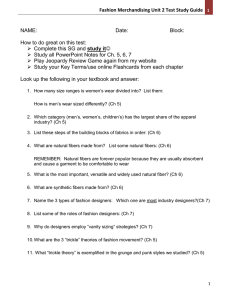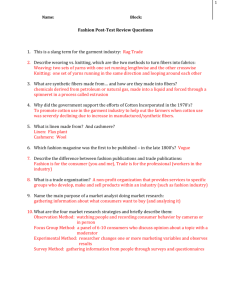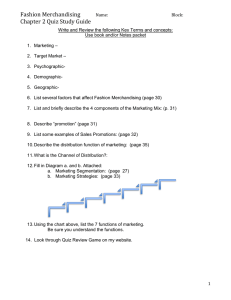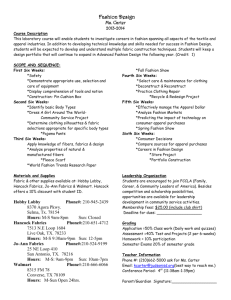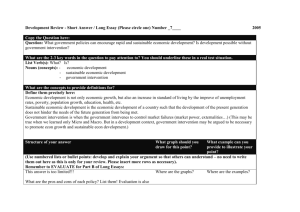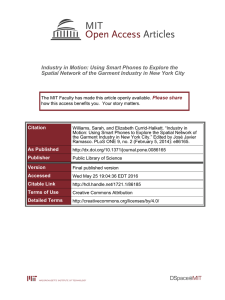Fashion Merchandising Unit 2 Test Study Guide
advertisement
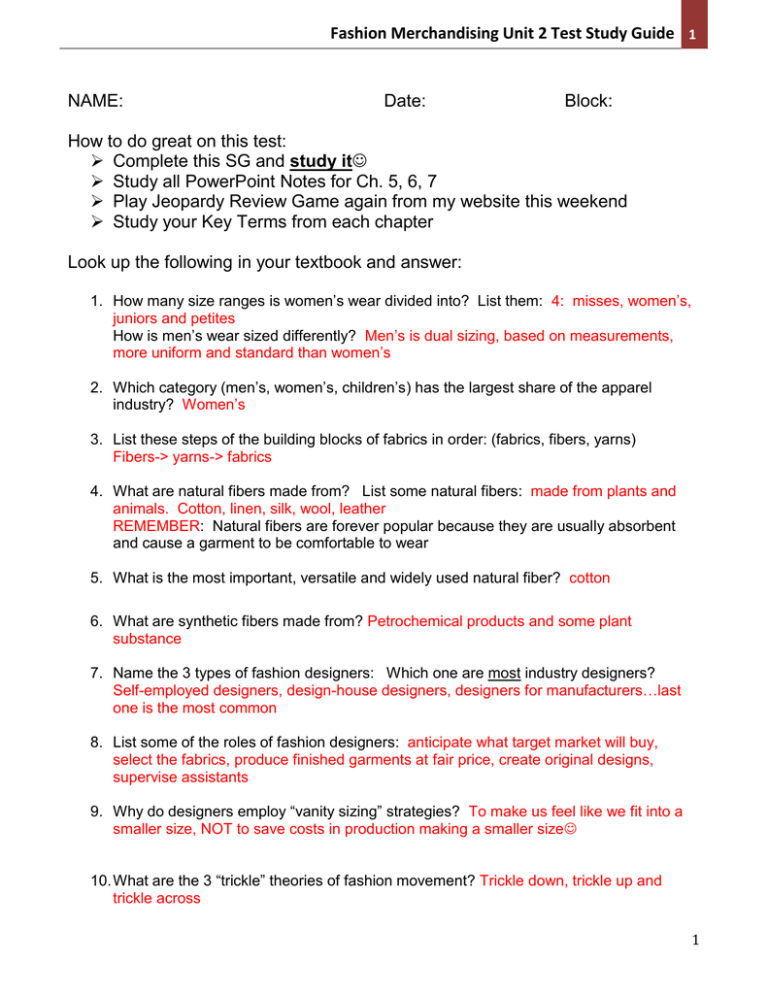
Fashion Merchandising Unit 2 Test Study Guide 1 NAME: Date: Block: How to do great on this test: Complete this SG and study it Study all PowerPoint Notes for Ch. 5, 6, 7 Play Jeopardy Review Game again from my website this weekend Study your Key Terms from each chapter Look up the following in your textbook and answer: 1. How many size ranges is women’s wear divided into? List them: 4: misses, women’s, juniors and petites How is men’s wear sized differently? Men’s is dual sizing, based on measurements, more uniform and standard than women’s 2. Which category (men’s, women’s, children’s) has the largest share of the apparel industry? Women’s 3. List these steps of the building blocks of fabrics in order: (fabrics, fibers, yarns) Fibers-> yarns-> fabrics 4. What are natural fibers made from? List some natural fibers: made from plants and animals. Cotton, linen, silk, wool, leather REMEMBER: Natural fibers are forever popular because they are usually absorbent and cause a garment to be comfortable to wear 5. What is the most important, versatile and widely used natural fiber? cotton 6. What are synthetic fibers made from? Petrochemical products and some plant substance 7. Name the 3 types of fashion designers: Which one are most industry designers? Self-employed designers, design-house designers, designers for manufacturers…last one is the most common 8. List some of the roles of fashion designers: anticipate what target market will buy, select the fabrics, produce finished garments at fair price, create original designs, supervise assistants 9. Why do designers employ “vanity sizing” strategies? To make us feel like we fit into a smaller size, NOT to save costs in production making a smaller size 10. What are the 3 “trickle” theories of fashion movement? Trickle down, trickle up and trickle across 1 11. What “trickle theory” is exemplified in the grunge and punk styles we studied? Trickle up 12. What are the 5 stages of the fashion cycle – in order? Draw a diagram: (page 102) introduction, rise, peak, decline, obsolescence 13. What two ways do fibers become fabrics? Knitting and weaving 14. What do silkworms wrap themselves in that gives us silk fibers? cocoons 15. Name some properties that affect the characteristics of fabrics: (ex: warmth, price) absorbency, shrinkage, strength, appearance, comfort, warmth, price 16. Name: the 2 computerized systems used in fashion manufacturing: CAD – computer-aided design CAM – computer-aided manufacturing The following should be answered in short answer paragraph form 17. What category has the largest share of the apparel industry? How many times a year are new lines introduced in this category? What is length of retail life of each line? Women’s! 5 times a year! Summer, fall, holiday, winter, spring…. about 10 weeks retail life each. 18. Name the 5 principles of design and give your description of each: Proportion – relationship of spaces of garment Balance – relationship of one side of garment to the other Rhythm – sense of movement through repetition Emphasis – center of interest or focal point Harmony – ties it all together! Write the definition or meaningful description of these: (check your notes & key terms for these answers) Lines Hardlines Softlines Accessories Fad: (example: leg warmers in the 80’s) 2 Fashion Merchandising Unit 2 Test Study Guide 3 Trend: (example: blue jeans) Denier Extrusion Spandex Polyester Cotton Joseph Jacquard – invented loom Eli Whitney – invented cotton gin Prêt-a-porter Patternmaking Grading Color Silhouette Line (the element of design, not the seasonal line of clothing) STUDY THIS and you’ve got it made! Then we will play Jeopardy… I believe you can do amazingly well on this test 3
